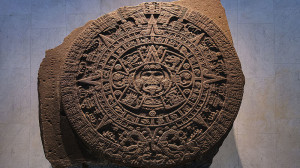Creation Corner
Calendar, sun and moon

On June 11, this writer asserted the present synodic month (the time for one cycle of the moon through all its phases) might not have set itself until a few years before the Biblical Famine. Professional calendar watchers will, to paraphrase Actor George C. Scott in Dr. Strangelove, etc. (1964), “go absolutely ape and strike back with everything they’ve got.” Let us, then, look with judgment on what the calendar watchers really have. The historical evidence in fact agrees with human beings first keeping a 360-day calendar, realizing early the solar year had five more days plus a few hours, and only centuries or millennia later trying to divide the year by the phases of the moon.
What calendar history truly shows
Pre-flood calendar
Most of the history of calendars comes to us from after the Biblical Flood. But one pre-Flood source survives: the Annals of Shem, Ham and Japheth. Moses, of course, included that in his first Book of the Law (Torah). We know these Annals as Genesis 6:9(b)-10:1. The three sons of Noah described the design of Noah’s Ark (Tevah, a name meaning “life ship”), the breakout of the “fountains of the great deep,” and the “cruise” of Noah’s Ark before it grounded and Noah, his family, and their animal and bird specimens disembarked.
They never described the calendar itself in detail. But they did give precise dates for the beginning of the Flood and for certain key events and intervals. Those events and intervals clearly show: before the Flood, Noah and his sons observed a calendar with a thirty-day month. They did not name their months; they numbered them. The months began in autumn, the most likely season of creation. This table gives the details:
| Given date or interval | Calculated date | Verse |
| 600th year of Noah, 2nd month, 17th day | Same. Flood begins | Genesis 7:11 |
| 150 days | 600th year of Noah, 7th month, 17th day. Water “prevails on the earth.” | Genesis 7:24 |
| 600th year of Noah, 7th month, 17th day | Ark rests in the eddy cut off from the flow (or “highlands of RRT”) | Genesis 8:4 |
| 600th year of Noah, 10th month, 1st day | Mountaintops visible | Genesis 8:5 |
| 40 days | 600th year of Noah, 11th month, 11th day: Noah makes first trial with a raven and a dove | Genesis 8:6-9 |
| 7 days | 600th year of Noah, 11th month, 18th day: second dove trial | Genesis 8:10-11 |
| 7 days | 600th year of Noah, 11th month, 25th day: third dove trial | Genesis 8:12 |
| 601st year of Noah, 1st month, 1st day | Ark’s resting place now dry. | Genesis 8:13 |
| 601st year of Noah, 2nd month, 27th day | Earth dry as far as Noah can see. | Genesis 8:14 |
Notice: water “prevails on the earth” for 150 days. That interval fits to the day between the seventeenth day of the second month, and the seventeenth day of the seventh months. So thirty days make a month.
Notice also: in the twenty-fifth day of the eleventh month, a dove flies out from the Ark. She never comes back. Then after the turn of the year, Noah and his sons find their Ark on dry land. fifty-seven days later, they see dry land all around them. Why shouldn’t we assume that thirty-five days passed from the day a dove flew away and never came back, to the day the great barge rests on dry land?
So this passage clearly supports a calendar of 360 days, in twelve months of thirty days each. Months began and ended with the new moon.
Post-flood calendars

Aztec calendar stone, National Museum of Archaeology, Mexico City. Photo: Sasha Isachenko on Wikimedia Commons, CC BY-SA 3.0 Unported License.
Secular calendars of the ancient Near East concern us here. They include the ancient Sumerian and Egyptian calendars. Egypt swiftly adopted a solar calendar of about 365 days. The regular flooding of the Nile River would have given them that clue. In fact, as this Wikipedia entry shows, the Egyptian year began and ended with the Inundations. The Egyptians also watched the stars early in their history. How soon the Egyptians (who descended from Ham) realized a year had more than 360 days, scholars do not quite agree. But on one thing they do agree. The Egyptians divided their year into twelve months. Shem, Ham, and Japheth, of course, did the same before the Flood.
Lunisolar calendars began with the Hebrews and the Babylonians. The ancient Romans used a 354-day calendar and relied on their Pontifex Maximus to throw in an extra month before their month Martius (modern March). But not all Pontifices Maximi did this. Some played politics with the calendar. Others (like Quintus Caecilius Metellus Pius) simply neglected this duty. Julius Caesar then became Pontifex Maximus and reformed the calendar to what we use today, except for Pope Gregory IX’s formula for determining when a leap year is not a leap year.
But until roughly the time of the Exile of the ancient Israelites to Babylon, the Hebrews and even the Babylonians kept observational calendars. That is, they declared a month after witnesses reported a new moon, and they would declare a new year according to their crop seasons. (The Hebrews declared their year, which by then began in springtime, when the barley ripened in Jerusalem.)
Thus scholars of ancient times have no record on which they may rely, to tell them the length of the month before about 599 BC. Then the court astronomers of Nabopolassar (or Nebuchadnezzar II) invented their 19-year cycle. Note: Hillel II, in writing a calendar for Diaspora Jews, also used a 19-year cycle.
From this we know only that by 599 BC, careful observers knew how long a synodic month ran. (They probably knew this earlier in ancient Rome.) These scholars have no reason to suppose that ancient human beings knew, or even cared, how long a synodic month ran.
Clues from the Bible
The ancient Hebrews, like Noah and his sons before the Flood, either numbered their months, or named them for farming activities. (The Israelites, during the Regal Period, adopted the names Aviv, Ziv, Ethanim, and Vul for their first, second, seventh, and eighth months from their Canaanite neighbors. They would adopt the familiar names Nisan, Iyyar, etc., from the Babylonians during the Exile.)
The Annalists, beginning with Isaac, did not write precise dates for anything. Jacob, for one, did not even keep track of the number of the month. Instead, in Genesis 30:14 he writes, “Now in the days of wheat harvest Reuben went and found mandrakes in the field, and brought them to his mother Leah.” Not “in the third month, in such-a-day of the month.” Oh, no. “In the days of wheat harvest.” Jacob used even less precision in recording the death of his wife Rachel. (Genesis 35:17-20)
In sharp contrast, Moses recorded precisely the months, and days of the months, for observing the various festivals and for recording key events. So, though the Israelites kept their calendar by observation, they still knew how long a month ran, and would not expect that to change. Very likely, in the days of Abraham, Isaac, Jacob, and Joseph, the month did change.
All this agrees with the Moon losing six percent of its orbital energy between the Biblical Flood and the Exodus. And as noted before, the moon likely lost the last great part of its energy to an asteroid that passed too close to the moon (or the earth), calved, and bombarded the moon with its fragments. Or most of its fragments. For at least one likely fell to earth instead. The dust cloud from that fall disrupted the weather over the mountains where the White Nile and Blue Nile have their sources. With the result that the Nile failed to inundate to useful levels for seven years.
This should solve the mysteries of the calendar. We might never know how many times the length of a month changed. Abraham, Isaac, Jacob, and the sons of Israel simply did not care about a thing like that. Moses, with his Egyptian court education, did. But by then the last of the great changes in the synodic month had taken place. So Moses and his followers kept a more regular calendar after leaving Egypt.
Terry A. Hurlbut has been a student of politics, philosophy, and science for more than 35 years. He is a graduate of Yale College and has served as a physician-level laboratory administrator in a 250-bed community hospital. He also is a serious student of the Bible, is conversant in its two primary original languages, and has followed the creation-science movement closely since 1993.
-

 Civilization4 days ago
Civilization4 days agoDC Pipe Bomb Arrest Raises Questions About Christopher’s Wray’s FBI
-

 Civilization5 days ago
Civilization5 days agoThe Legal Logic Behind U.S. Operations Against Narco-Terrorist Networks
-

 Executive5 days ago
Executive5 days agoNewsom’s ‘National Model’ for Homeless Wracked by Fraud
-

 Executive4 days ago
Executive4 days agoWhen You’re in a Hole, Stop Digging
-

 Education3 days ago
Education3 days agoWaste of the Day: Taxpayers Subsidize Football Coach Severance
-

 Executive2 days ago
Executive2 days agoWaste of the Day: Obamacare Failed Test, Approved Fraudulent Subsidies
-

 Civilization3 days ago
Civilization3 days agoPence Calls on Trump To Fire RFK Jr Over Abortion Drug
-

 Executive4 days ago
Executive4 days agoWaste of the Day: Feds Pay Nonprofits That Sue the Government















Jeremiah Laments liked this on Facebook.
Robert Fleming liked this on Facebook.
LOL LOL the “bible” plagiarized calendars as it does everything else. the 12 month calendars were known long before “noah”.
All the evidence of those earlier civilizations got washed away and lies buried under three miles of limestone, sandstone, and other kinds of sedimentary rock.
oh hogwash! utter nonsense. there was no “worldwide” flood. the epic of gilgamesh was long,long before it was stolen and the name changed to noah. living between the tigris and the euphrates wasn’t such a good idea.
The craft the Gilgamesh work describes would never have stayed afloat. It would have swamped in the first wave. Noah’s Ark struck the best possible balance among the three considerations of seaworthiness, sea-kindliness, and stability.
LOL LOL good luck with proving that! neither culture were sea peoples. and descriptions are often not accurate in stories passed down thru the yrs. the fact remains,many cultures have flood stories.
The fact that many cultures have flood stories means it made a hell of an impression. Not to mention the genealogies of people from around the world naming ancestors all the way through Shem, Ham and Japheth back to Noah, and even beyond to Adam. Centuries before exposure to the book of Genesis.
Just to pick up from before, you say there are no confirmed predictions made by Walt Brown. Here’s a list of all of the predictions, along with those confirmed. Hold onto them for future reference :
– pooled water under mountains (confirmed)
– many fossilized whales at the base of Andes
– deep channels under the Bosporus & Gibraltar (confirmed)
– Earth is shrinking
– granite layer deep under Pacific floor
– sequence of ages wrong for Hawaiian islands
– Grand Canyon’s inner gorge is a tension crack
– no fossils, coal, or strata below frozen mammoths
– salt on Mars (confirmed)
– mass of solar system heavier than expected
– excess heavy hydrogen in very deep water
– Oort cloud does not exist
– no incoming hyperbolic comets
– asteroids are low-density flying rock piles (confirmed; and again in 2014)
– rapidly spinning asteroids are well-rounded
– asteroid rocks are magnetized
– water is inside large asteroids (confirmed in 2014)
– little radioactivity on Moon, Mars
– carbon-14 in “old” bones (confirmed)
– rocks on asteroids and comets are rounded (confirmed in 2014)
brown is a creationist and a poor one at that. also ,he is a mechanical engineer not a scientist. so i fail to see how you can claim he predicted anything. let alone anything a creationist believes in. they believe i godidit-POOF! earth and people fully realized suddenly. brown is grossly confused.
Well, then it’s amazing that he’s able to make predictions that are confirmed as fact. His predictions are in print. Perhaps you can enlighten us with a few real predictions of your own? Besides something childish like “the Sun will rise tomorrow”. Something no other scientist thinks can be so. Can’t? Big surprise. You, my friend, are grossly confused.
LOL how did he make “predictions”? all he did was copy what science already knows.LOL
He did no such thing. He upstaged conventional scientists dozens of times, with his predictions on the composition of comets and asteroids, to take but two examples.
Chris, this all boils down to a comment you just made, “I fail to see”. Your blindness is willful.
LMAO he did not
Chris just because you say something repeatedly does not make it true..Brown is as qualified as anyone else to conduct experiments through hypothesis and prediction. He is in fact more educated than many of our most prolific scientist.
Here is the thing, it would make no difference if Brown was educated in many disciplines..which he is, because you have made it clear you reject anything that does not conform to your skewed view.
At some point you need to be intellectually honest with yourself and actually read the book. If for no other reason than to be able to say you have examined the evidence. Otherwise, your incompetence on the events that formed our planet is quite apparent and you just look foolish.